
Installation View
Morag Keil, Georgie Nettell
Questionnaire, 2017
Yale Union, Portland
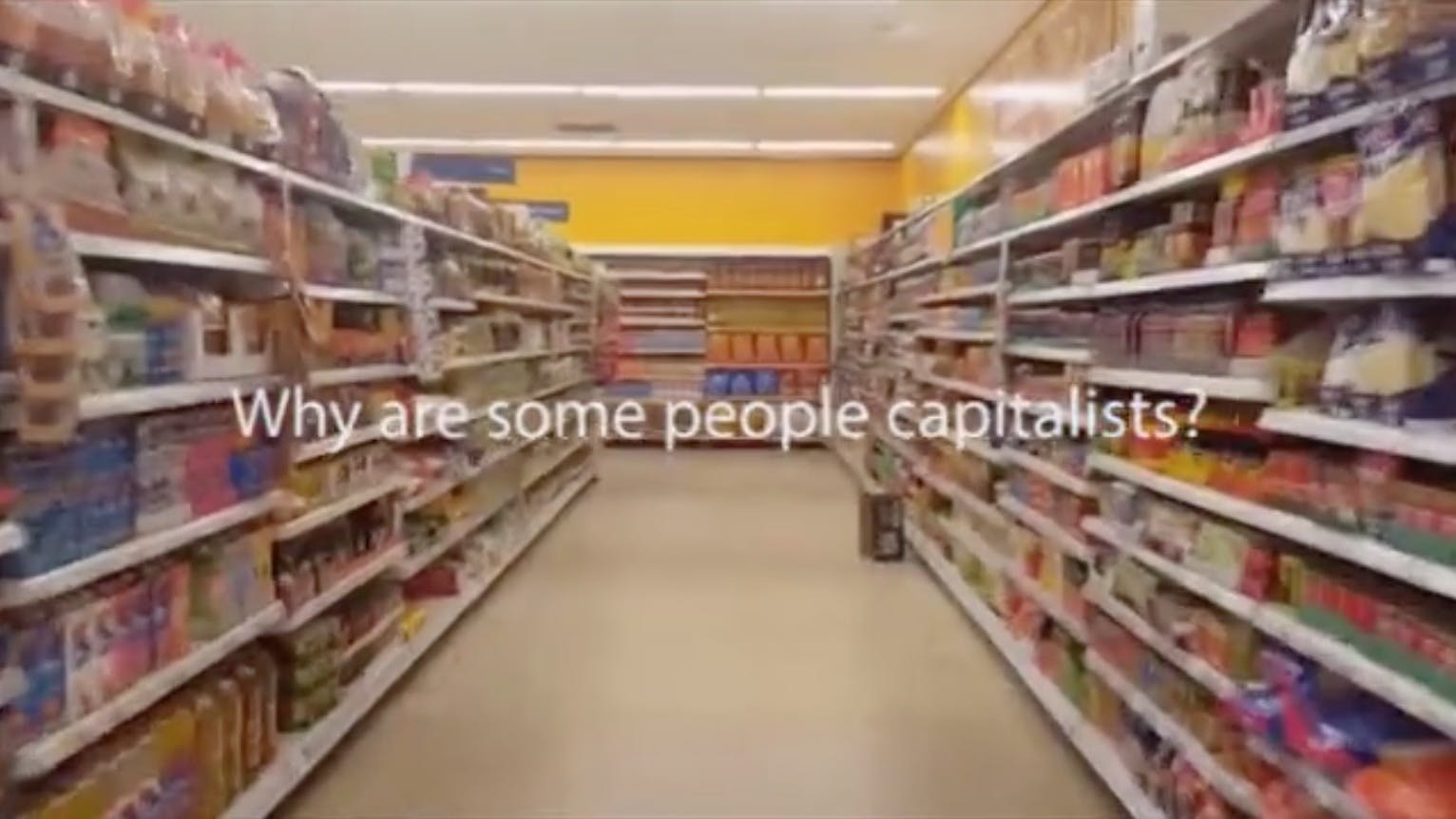
Morag Keil, Georgie Nettell
Questionnaire
2017
12 channel HD video
74 mins, 16 secs
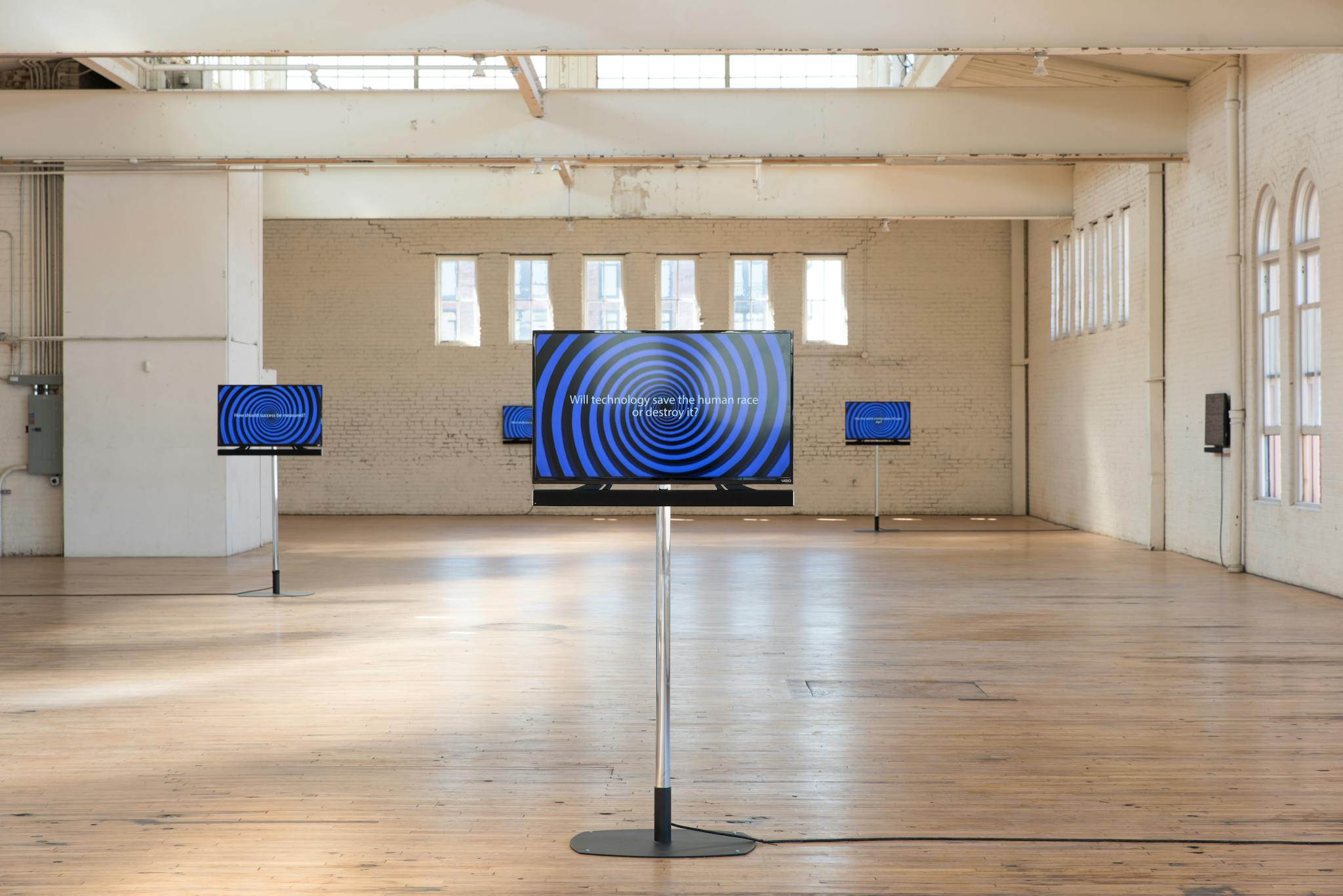
Installation View
Morag Keil, Georgie Nettell
Questionnaire, 2017
Yale Union, Portland
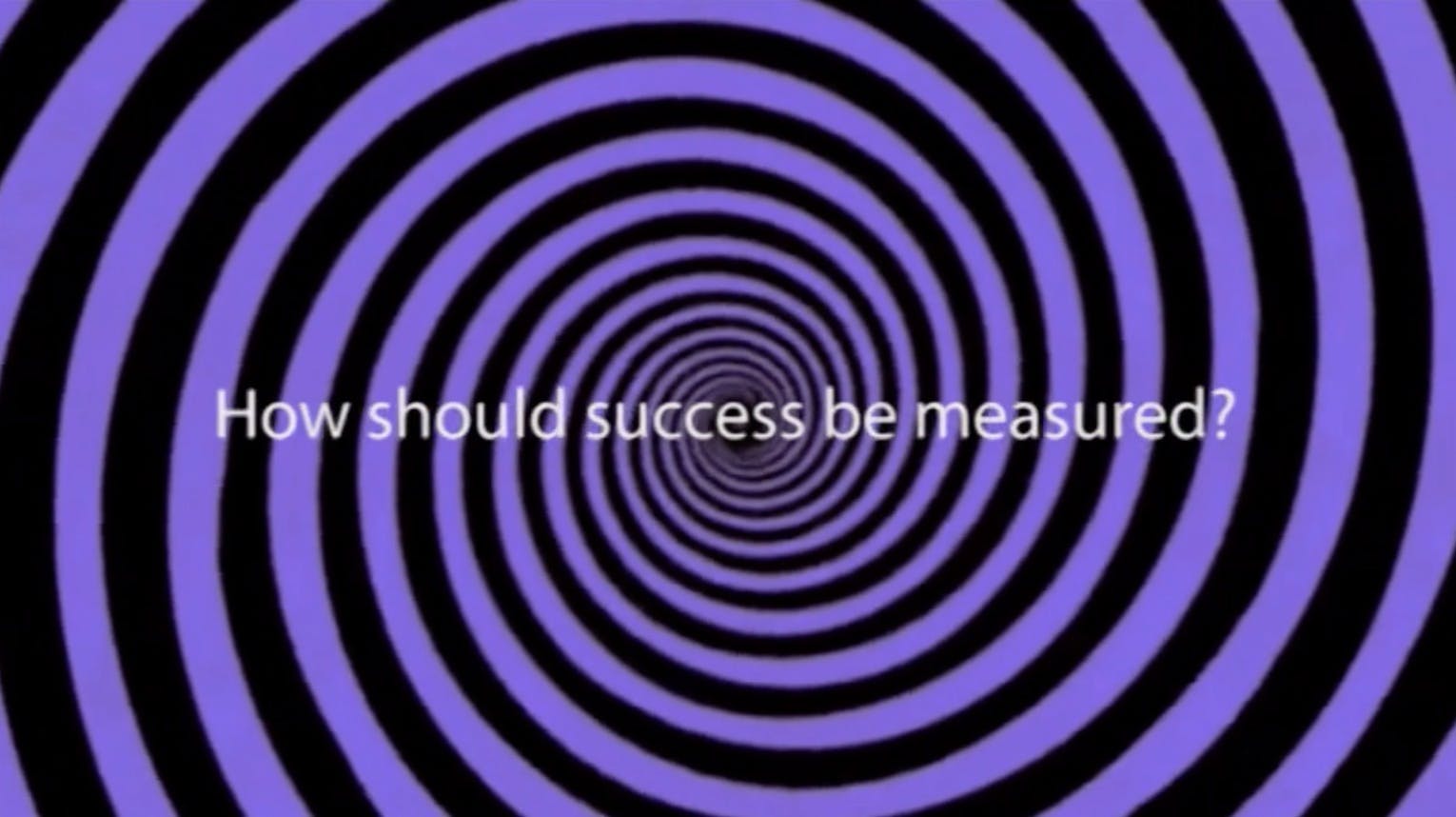
Morag Keil, Georgie Nettell
Questionnaire
2017
12 channel HD video
74 mins, 16 secs
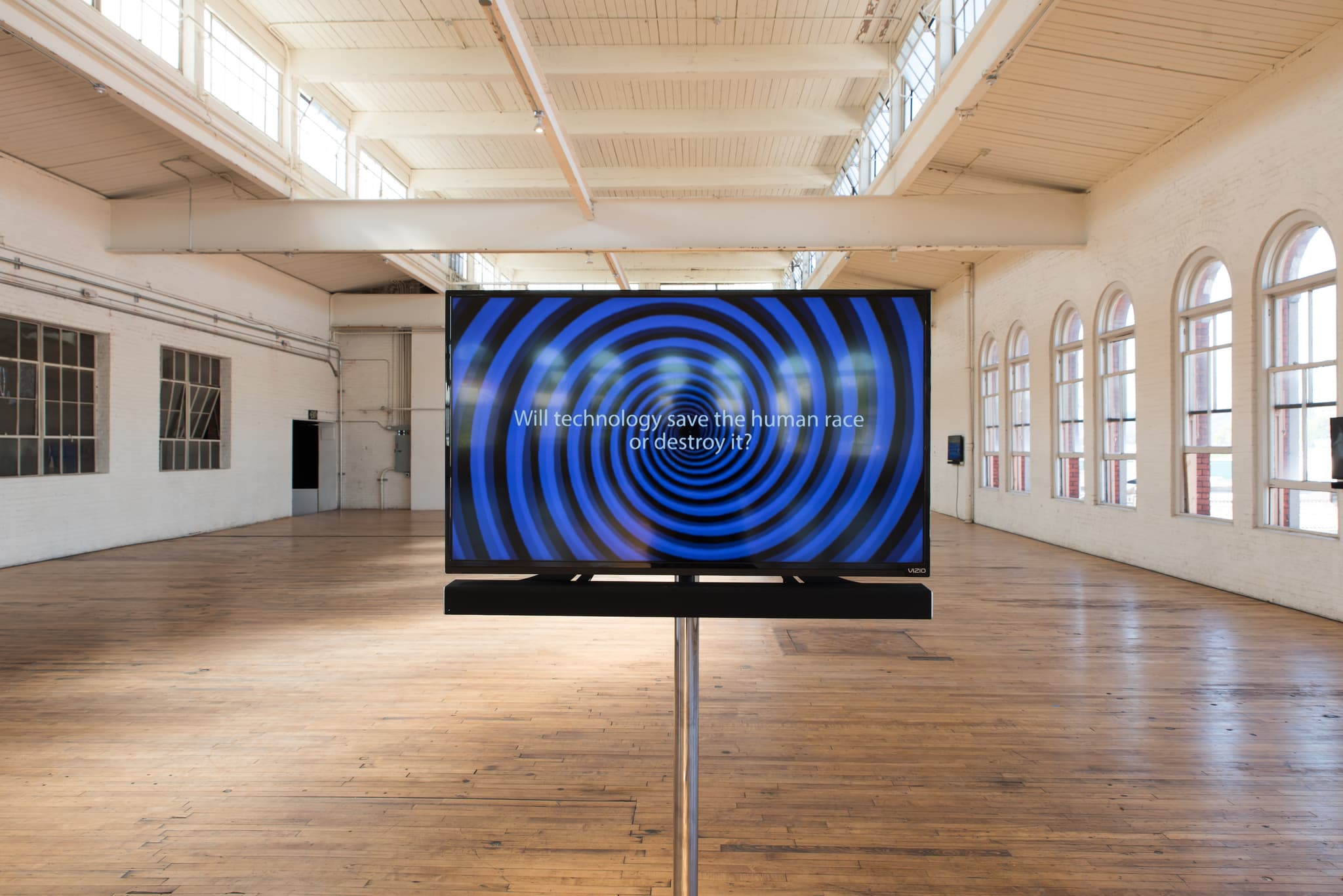
Installation View
Morag Keil, Georgie Nettell
Questionnaire, 2017
Yale Union, Portland
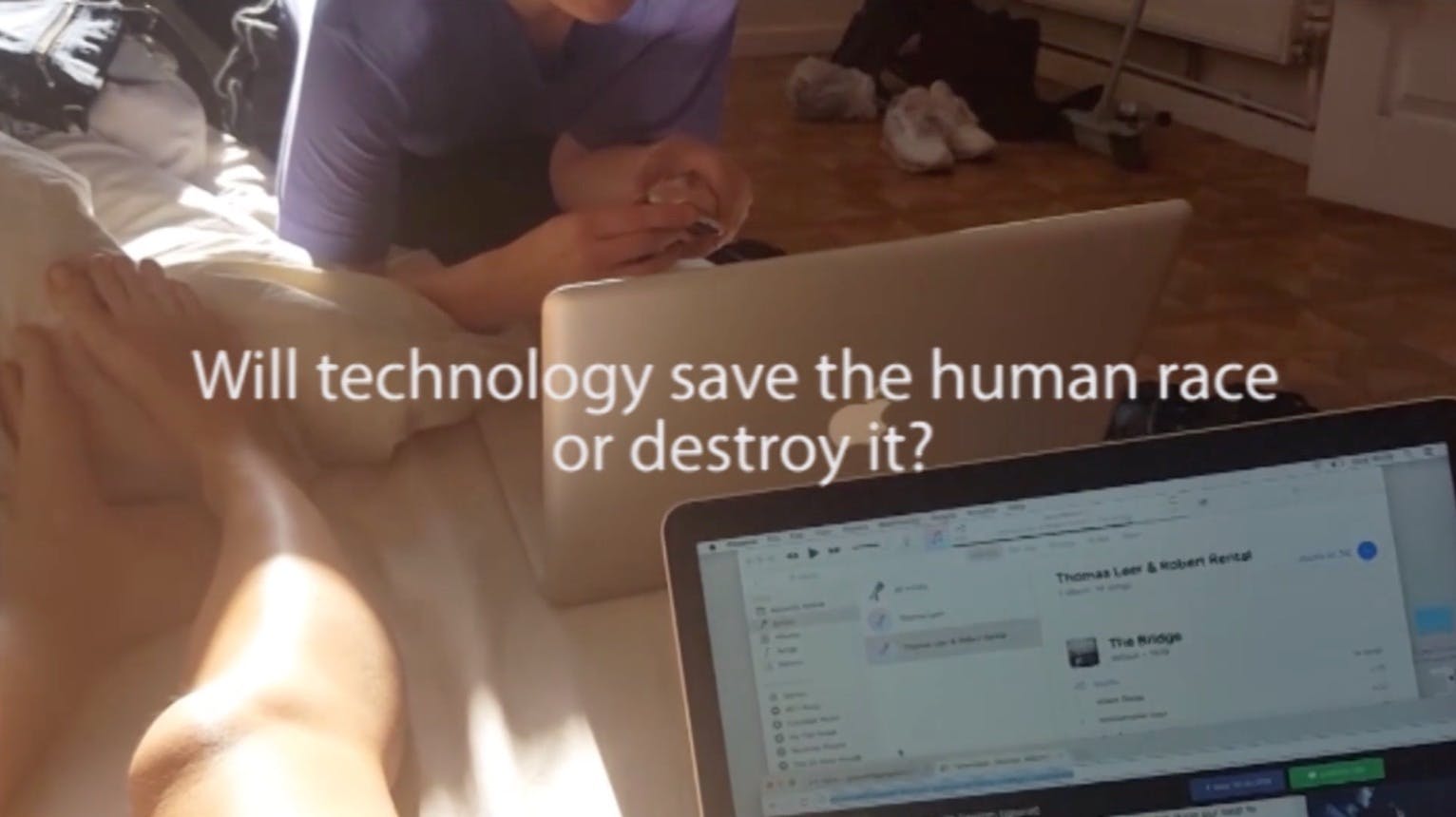
Morag Keil, Georgie Nettell
Questionnaire
2017
12 channel HD video
74 mins, 16 secs
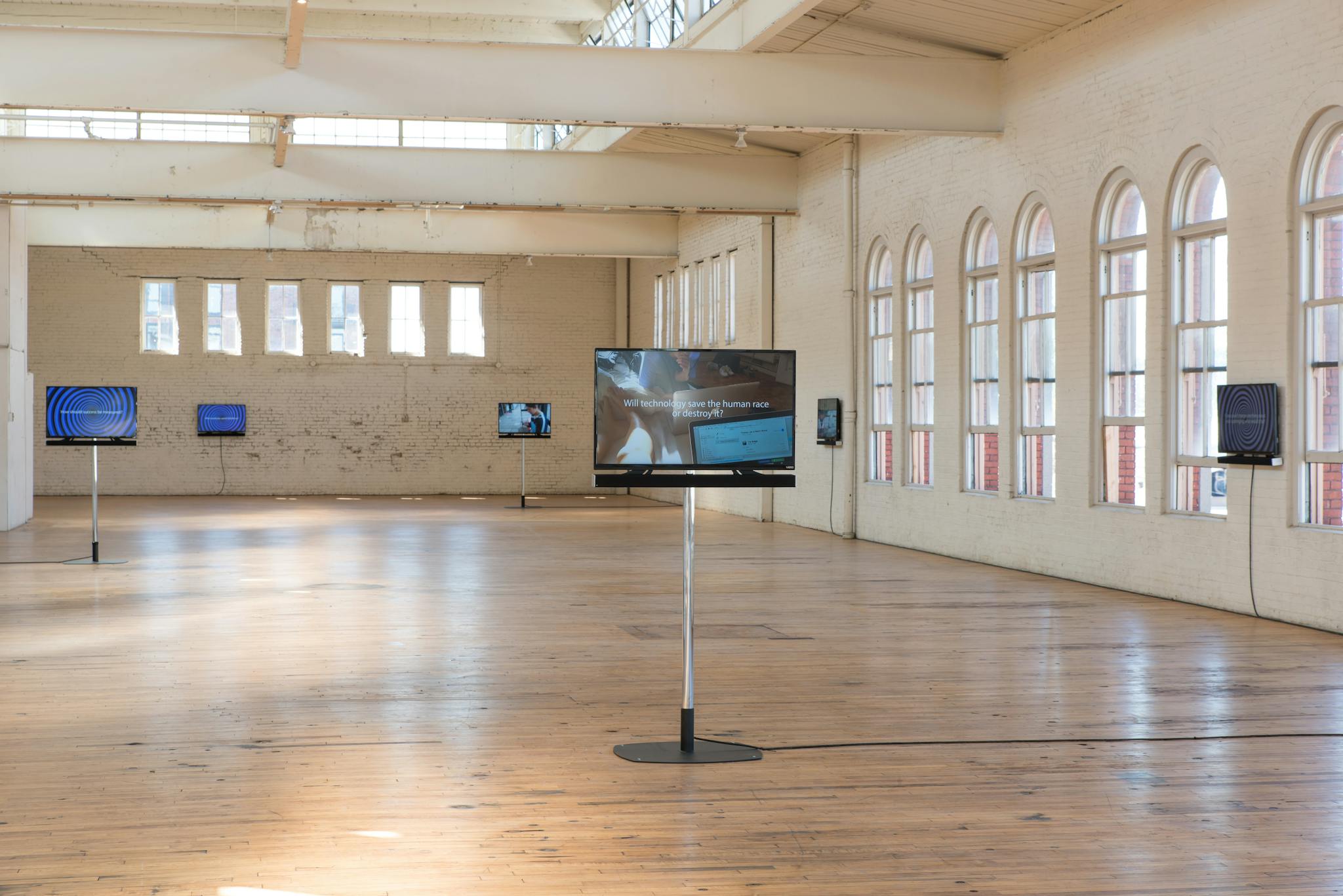
Installation View
Georgie Nettell, Morag Keil
Questionnaire, 2017
Yale Union, Portland
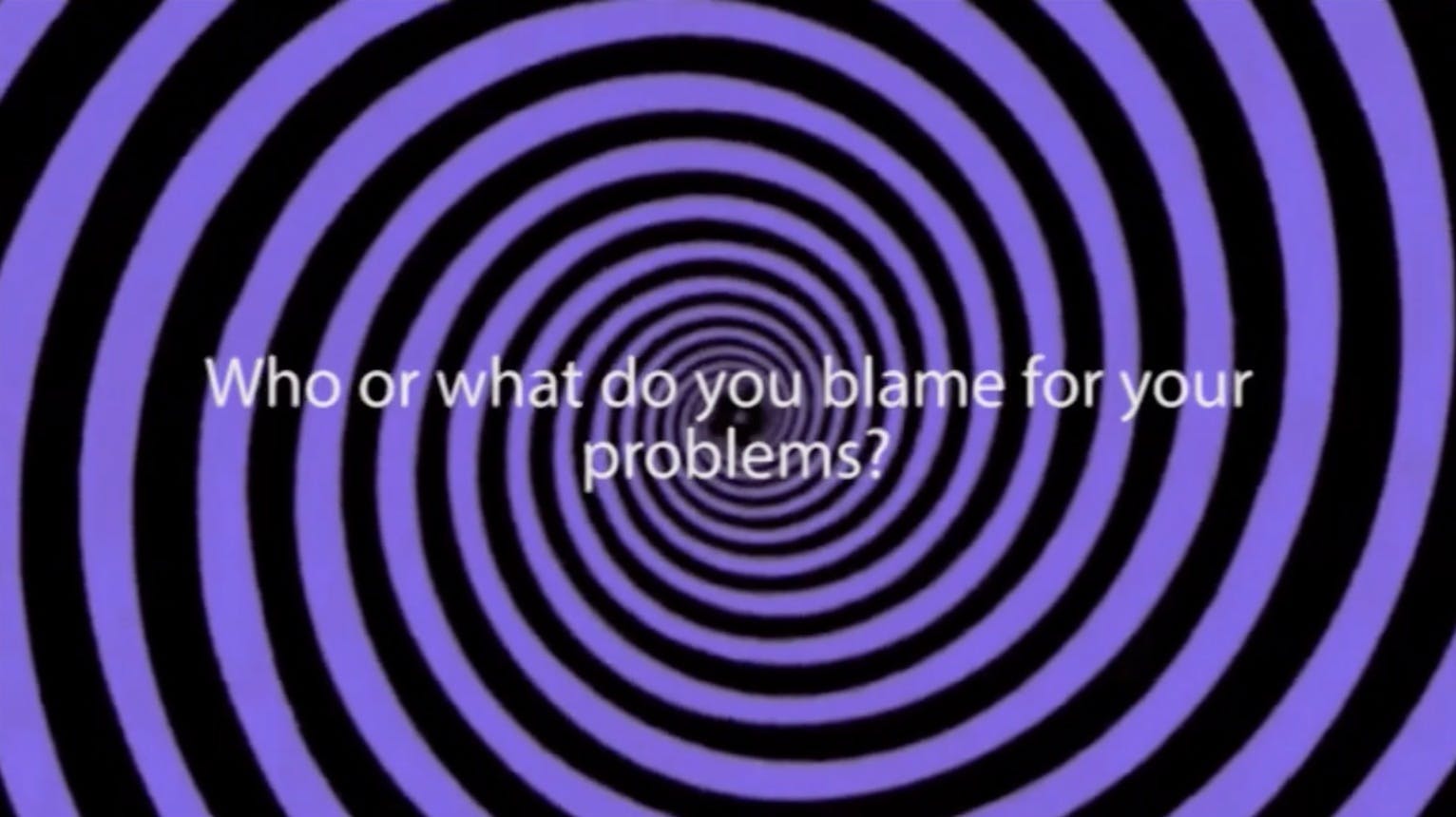
Morag Keil, Georgie Nettell
Questionnaire, 2017
2017
12 channel HD video
74 mins, 16 secs
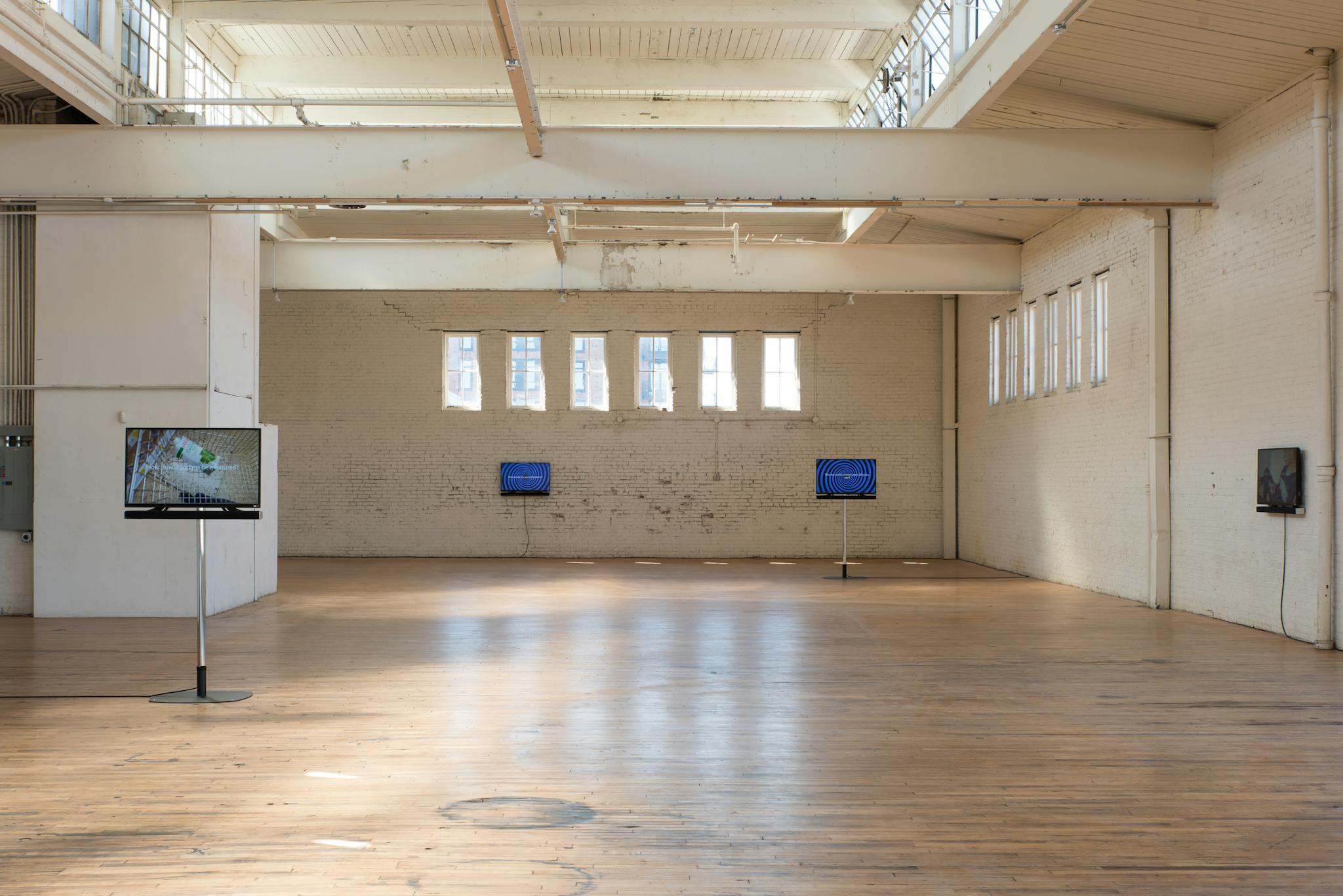
Installation View
Morag Keil, Georgie Nettell
Questionnaire, 2017
Yale Union, Portland
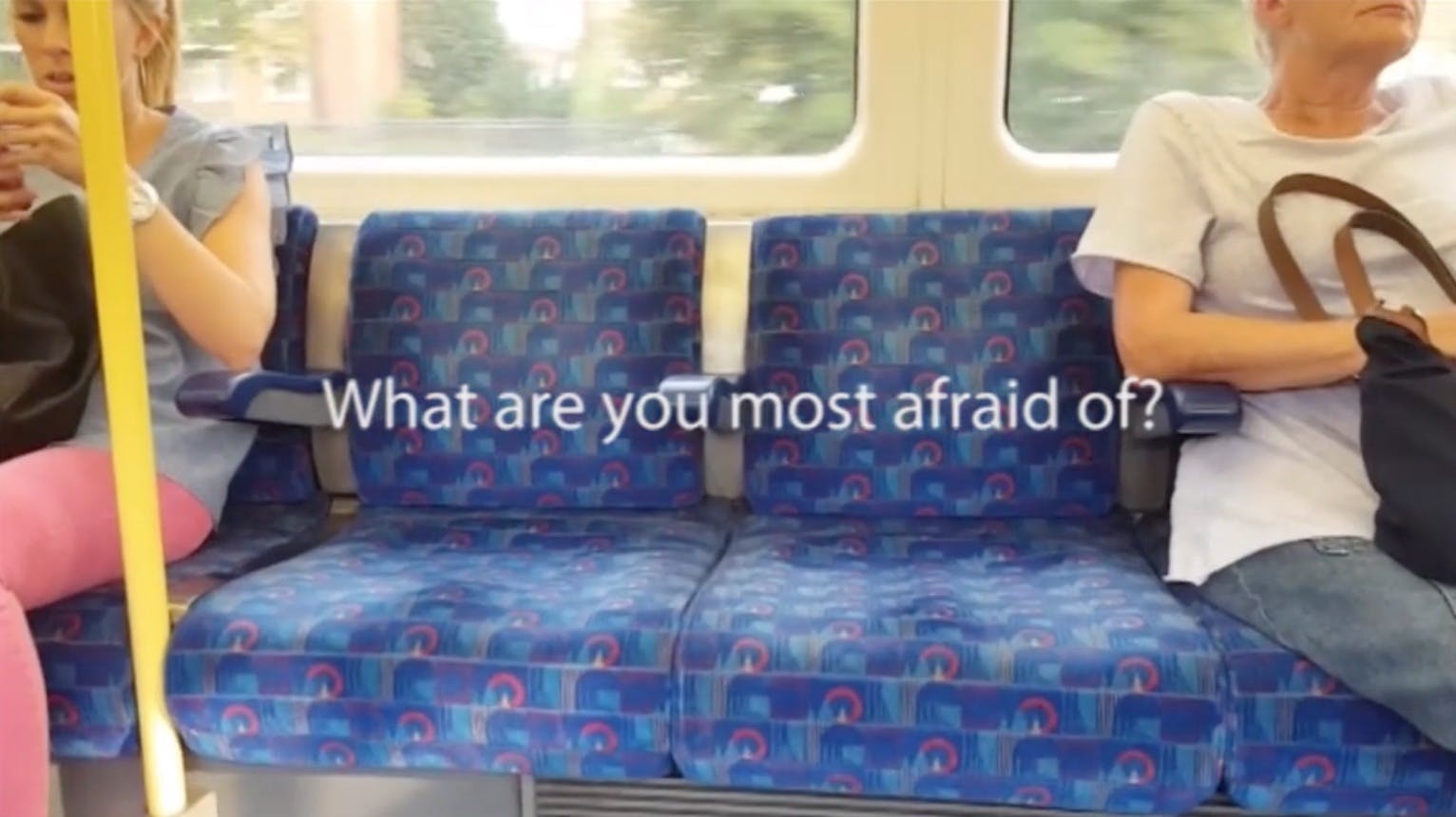
Morag Keil, Georgie Nettell
Questionnaire
2017
12 channel HD video
74 mins, 16 secs
Interview: Kari Rittenbach, Georgie Nettell and Morag Keil
-
KR: What inspired you to use the format of the survey-interview for this new work?
GN: The idea was to use the budget for the show to pay people to be interviewed. This came from thinking about the social aspect of art production, where artists are using other people’s ideas and insights all the time. It was meant to literalize and monetize that process. The budget for this show is $20,000 (which is why one of the questions is “What would you spend $20,000 on?”) and each respondent got a fee of $100, so it was an attempt to redistribute those funds rather than invest them in physical objects. First we asked some friends from our immediate circle, then people they knew (e.g. family members or work colleagues), then we also asked those people at a second level of remove to connect us to others even more removed from us. We did manage to find people with quite a diverse range of backgrounds this way, but since it was friends of friends, we still ended up with mainly left-wing, liberal-identifying people. When we realized this we discussed trying to actively find people who identify as right wing or voted for Trump or UKIP, but decided against this because it felt like it might be irresponsible to platform some of the opinions we imagined those people might have. If we asked the question, “Was the world a better place 50 years ago?” and someone replied, “Yes, because there were fewer immigrants,” then what do we do as authors - neutrally present that view as though we have no problem with it? The problem with this is that we didn’t really leave our bubble or get diverse opinions. However, it is not a scientific study, it is an art show. So in the end it is about public opinion surveys and polls, or diverse perspectives, rather than being an accurate example of these things.
KR: I like this explanation, because as a viewer - even though I’m aware of some aspects of the production process, in terms of extending the friend-of-friend network - my first impulse is to obviously read the film through its form: the survey or opinion poll. Considering your distinct art practices, I was curious whether that interest came from one of a few different places: for example, the questionnaires common in mainstream “women’s” magazines that allow individual (female) readers to evaluate their personal habits and/or insecurities in relation to patriarchy and the white male gaze as a practice of self-improvement (“How to be a better lover,” etc.), or maybe in relation to the survey-cum-surveillance strategies now exploited by Big Data in combination with psychometrics, that surreptitiously profile users of social media. Individuals are composed of a number of contradictory desires and traits, both inherent and imitated. It seems more and more today like these granular specificities are interpolated and exploited before any self-directed action (or political self-actualization) can really take place. It’s a focus on hyper-specific individualism, rather than what’s shared in common.
So anyway, that suggests to me that “deciding” UKIP/Trump supporters do not constitute a public you intend to interact with, or address, seems totally cogent. Instead, Questionnaire compiles a number of anecdotal affirmative views of social connection and anti-capitalism that are not often portrayed in dominant media. Power in the art world always amplifies position, and ambiguity (I don’t mean complexity) can seem like an evasion of ethics. Of course surveys aren’t objective, right? They’re designed for population control, political influence, and marketing purposes. What does it actually mean that the “accurate” scientific versions of opinion polls and surveys are used for non-art, propagandistic, even repressive ends?
MK: I also think [the survey-interview format] was a combination of ways we’ve both worked in the past. I’ve made videos interviewing people about how they pay their rent and Georgie has spoken to me about wanting to produce an edited questionnaire (a bit like a census), or something related to cognitive behavioral therapy questionnaires, as an exhibition press text. In general, we’re both conscious of the use of stats, graphs, and numbers in advertising and media at the moment, especially with tech companies like TaskRabbit and Handy. The ads on the subway in NYC are like, “5,676 meetings happening in your area right now,” or “287 apartments cleaned in an hour,” etc., as if everything can be measured in numbers. But also I’m curious about people’s opinions, and doing this allowed us to meet with different people and speak about things that affect them and are important to them.
KR: Yeah, it seems like we are only alive if we can be quantified. This is true in relation to public education and also the economy. “Success” is a metric. It’s also one of your questions: How do you measure success? This work is more participatory than your previous collaborative film, The Fascism of Everyday Life (2016) which used similar visual strategies (found commercial advertising) and put pressure on the ideological “social norms” of the family and private ownership by pitching the reality of your own cooperative living situations (a consenting collective of non-blood relations, lol) against the “hard” external data on rental properties provided by real estate agents and collated by UK property website Zoopla. The numbers only tell part of the story (and can tell different stories in different combinations!). Yet there are very few “quantifiable” queries in the Questionnaire survey. Numbers are subject to distortion especially where the cost of social welfare is high and income equality very low - this is one thread I can trace between the two film projects. What was it like drawing from a bigger pool of data this time around?
MK: It was a system or structure to follow because we’d never had a budget like this - that we were sort of in control of - and sharing it just seemed like the best thing to do. But again, like Georgie said, all artworks are contributed to by so many people, and it feels like only a few people get remunerated or acknowledged.
I didn’t feel that the people we spoke to were skeptical of sharing information; in fact, they were open and wanted to talk about the questions. But maybe that’s also because it was just audio recording and everyone was anonymous. Also, we were always introduced to people via a friend so I suppose that set the situation up as something more relaxed. There is also normality to presenting your opinions and life stories on social media. I can’t really say that we can draw any conclusions about why some people answered with more information and others less, but maybe it has to do with how comfortable, confident, and used to sharing opinions people are.
KR: Did you compose the survey questions based on your own life experiences, or borrow them from different sources?
GN: The questions are from multiple sources. “Why are some people capitalists?” came up as a genuine question in conversation between Morag and me. In a way, that started the whole project because we realized it was a big question, with many possible answers: it depends what you mean by capitalist, do you take the Marxist definition, or is it about individual personality? Does living in a capitalist society produce capitalist people, or is it familial conditioning, or human nature? Different respondents took it in different ways. Some see capitalism as a systemic fact that we all live under, so no one person is more capitalist than another; while a lot of other people responded as though being “a capitalist” is a character flaw.
Other questions came from magazine interviews with celebrities, OkCupid, Yahoo Answers, and suggested first date questions. We researched various getting-to-know-you type question lists online and chose the ones that seemed the most interesting.
MK: Some of the questions have been edited out of the final work completely, as they functioned more like warm-up questions. We also tried to describe the project fully before launching into the interview so that people understood what we were going to use their responses for, and what the project was, where the money came from, etc.
KR: What are the conventional uses for public opinion surveys in the UK? According to Wikipedia, the first poll in the U.S. was undertaken by a Pennsylvania newspaper in 1834 during the presidential reelection campaign for Andrew Jackson - the survey originally had something to do with democracy.
GN: I suppose I am exposed to surveys and polls mostly in relation to politics. For example, I checked the polls for the recent UK election every day, sometimes multiple times. The consumer versions are more behind the scenes. That information is not presented to the public in the same way that political opinions or voting intentions are.
MK: Yeah definitely in politics - it’s massive, especially right now. They get the people who make the polls to speak on the news. The census is a big one too, like in the U.S. In the UK you get fined if you don’t complete it, which is probably the same in the U.S., so it is a means of control and the statistics gathered are used for so many other purposes. But stats can be squeezed so easily, obviously - Zoopla even collects statistics about what newspapers are bought in particular areas. But it’s just numbers: 273 Guardians bought in Lewisham. What does this mean and who are the respondents, and what about the results? It seems like a totally meaningless stat. But like the political polls, Zoopla actually ends up controlling the market. The polls influence voters, so they are meant to be a forecast or estimate, but end up being fact. It makes the prediction true because people use these polls to make decisions. So Zoopla really dictates market rates for properties even though its findings are meant to be an objective estimate.
KR: The Brexit and Trump votes showed that the era of the dominance of liberal media is over though, wouldn’t you say? (The New York Times had a bar graph showing a 90% chance for Clinton to win.) So it’s more important than ever to know who the respondents are (Guardian readers as a demographic) and who is doing the data collecting . . .
GN: Apparently, when the results of the recent UK election were announced, Rupert Murdoch was so angry he stormed out of the room. He is losing his grip on public opinion, and surely this is a good thing. People complain about social media, and it does have its problems, but was it really better before? Would anyone really want to go back to a time where someone like Murdoch could dictate the results of a general election? I mean the Tories still won, but they won badly, and The Sun newspaper coverage of the election seemed very desperate. I was reading articles on The Sun online headlined stuff like “Don’t put Britain in the Cor-‘bin’,” (i.e., trash can, punning on the surname of Labor leader Jeremy Corbyn). But in the comments people were saying, “What is this bullshit?” and “Austerity is destroying this country,” etc. In the past, people might have expressed that opinion to whoever was sitting next to them but it wouldn’t have got any further. Having this opinion appear at the end of the article goes some way to destabilizing the narrative.
KR: I’ve been thinking a lot about a Dia Foundation project by Group Material (Doug Ashford, Julie Ault, Felix Gonzales-Torres) that took place in New York in 1988 called Democracy. It involved installations of artwork by artists without any market valorization and also a series of town hall meetings held by cultural representatives of different groups. The catalogue is an interesting document at the moment, precisely because it brings up issues around participation and representation in the art world in comparison to the “real world,” that we seem to be facing again today. In the catalogue preface, Yvonne Rainer reflects on the discourses of post-modernism and post-conceptualism that were swirling around in the 1980’s, and also the background political context of the Reagan era and the U.S. “culture wars,” when there was a conservative backlash (anti-elitism, anti-intellectualism) and government funding for the arts was slashed (our version of TINA [There is no alternative] and Thatcherite UK). When she writes, “art exhibition does not have to separate, or isolate, its objects from the conditions in and under which those objects have been produced,” it also really applies to the strategy for the films that comprise Questionnaire, and to some of your other collaborations, Punks Not Dead It’s Different (2015). Somehow it’s like we’re repeating history (art, culture, class politics) right now as both tragedy and farce. Although Group Material’s Democracy is politically optimistic it remained entrenched in a deeply institutionalized context. Today their attempts to bring “real world” concerns into art seem admirable - but also naive. Your approach has been to conceive projects as existing within and through a fractured or problematic art world, without neglecting the conditions in which we (and our cultural products) are formed. I see this as a kind of “disenchantment” of art’s special status; but without anti-art’s contempt for the social, and without attempting to validate art as a replacement for social services.
GN: I feel like using people and their real opinions and feelings as content for an art show would be considered a no-go area for some people because it’s exploitative. We did try to make it as un-exploitative as possible, or make the exploitation transparent, but you can’t get away from the fact that we are capitalizing on people in a way that is very similar to how Facebook or Instagram do. However we are making work about the things that interest us. I can’t be bothered to engage with painting discourse, or with art’s meaninglessness anymore - I’d rather commit the sin of exploiting the “real” world . . .
KR: How does the artist exercise “choice” within society - as compared to someone with a more professional role: teacher, doctor, solicitor, accountant?
GN: Artists have more “choice” and less responsibility because in general they are not directly affecting people’s lives. This is what allows artists to maintain extreme theoretical positions, which may or may not be useful to society. A social worker might feel very cynical about society but know that the right thing for them to do is ensure the person they are working with completes their A-levels, or gets a job. Meanwhile an artist can critique the education system or the labor market without hurting anyone. Also art can quote cultural products without real world limitations. Morag and I made a fake property TV show, and now we have made a fake survey. This survey fulfils none of the criteria a real survey would need to, and has zero scientific or sociological value, but it emulates those forms.
MK: I guess on the more positive side, we could say it also questions those forms and their accuracy. But yeah, it doesn’t have to propose an alternative, it can criticize without having to solve the problem. Though I kind of see this film as a step on from The Fascism of Everyday Life, in that we tried to consider the opinions of the people around us, and the people around them, and then highlight the positive aspects of these conversations that people hold with each other rather than reduce everything down to a set of numbers. Some of the responses to The Fascism of Everyday Life video assume we are complaining about our living situations - but actually we wanted to show that not everyone aspires to live in the way that advertisements portray. Obviously it sucks to put up with mold, and over-priced rent, and landlords that don’t care, but also the answer isn’t necessarily a mortgage and a family or whatever Zoopla says. I guess it’s a step towards trying to identify other ways of living that don’t follow the usual trajectory, and that renting for your whole life with friends could actually be good - especially if we had rent control, social housing, and other laws to protect tenants. And I guess Questionnaire tries to use mainstream questions (from magazines and dating sites) to give a voice to some of the ideas and thoughts that are around us right now, and the negatives or positives that people around us experience.
KR: Is pop (music) an important framing device for political content?
GN: When we were making The Fascism of Everyday Life, we planned to collage the found material in with the footage of us doing house tours, but it didn’t really work. Then I watched a few episodes of Cribs and Homes Under the Hammer, and copying the format of a title sequence seemed like a good way to include the found footage. All TV title sequences and most adverts have music. It’s enjoyable to edit images and music together, and also enjoyable to watch, so it was for fun and to imitate existing media strategies.
KR: So, last question: are we bohemians or are we worms?
GN: Worms. It’s hard to know how to be bohemian in any real sense these days, or maybe that’s an excuse and we aren’t trying hard enough. I probably stopped being bohemian when I bought my first MacBook.